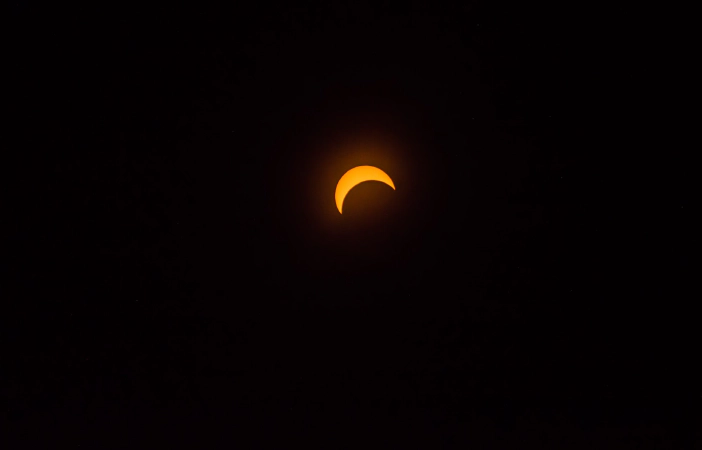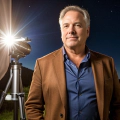
You’re curious. I get it. You have always looked at the sun directly in the bright sky and wondered what the Sun really looks like if it was close. Many times you wished if only you had a telescope you could satisfy your curiosity.
Direct sun observation is tempting indeed, especially when the sun is high and bright in the sky, seemingly beckoning us to look directly at it.
But let me tell you, the dangers of this seemingly innocent act are far greater than you could ever imagine especially if you have a telescope.
It takes a 100 seconds or less (under 2 minutes!) before you permenantly damage your retina when you look at the Sun directly when it’s high up in the sky.
You see, our eyes are sensitive which makes it difficult to see any bright light for too long. You would immediately look away and blink repeatedly to cope with the discomfort you just felt.
The Sun emits three main types of light which includes the visible light, Ultraviolet (UV) light and Infrared light.
Prolong exposure to UV light can cause the cells in the cornea to crack and blister much like when you experience sunburn. You’ll start to get teary and feel like there is some sort of obstruction or irritation in your eyes.
If you still continue to stare at the Sun, you’ll develop a condition known as Solar Retinopathy. This condition can be permanent. Due to the excessive stimulation, the retinal cells release chemicals which damage the tissues.
In some cases it’s possible to recover. However, there is high probability of some sort of permenant visual damage!
What You Need to Be Carful of When Viewing the Sun
If you have a telescope, it’s certainly possible to look at the Sun with it but only with certain precautions. However, never ever see the Sun directly with a telescope without these precautions. Why you ask?
You see, telescopes use an objective lens to focus light which creates an image and an eyepiece which magnifies this image. The same mechanism is observed in a microscope except the telescope is designed to focus and view distant objects where as the microscope is designed to focus and view nearer objects.
If you have ever experimented with a magnifying glass and paper, you’ll know that the Sun’s light passes through the magnifying glass and burns the area on the paper which its light focuses on.
You’ll experience the same thing if you look directly into the telescope to view the Sun!
Due to the absence of any pain receptors in the eyes, you won’t even feel your burning eyes until later when it’s too late.
Here is a video showing exactly how looking directly into the telescope could permenantly damage your eye!
Here’s another thing - never point the telescope directly at the Sun either. This will completely damage the telescope since all the light passes through the telescope and hence generates a lot of heat which will damage the parts.
So How Do You See the Sun With a Telescope?
The best way to see the Sun if you have a telescope is to use a white light solar filter that would fit your telescope.
White light filters are great for seeing sunspots on the surface of the Sun and ideal for viewing solar eclipses and transits of Mercury or Venus. You’ll see a yellow-orange Sun with this filter much like how it is during sunrise and sunset.
The other type of solar filter is the hydrogen-alpha solar filters. However, these are expensive and used if you wish to see the Sun’s flares, prominences, and associated activity. A narrow band H-alpha solar filter is specifically designed for this purpose.
The cheaper narrowband Nebulae hydrogen-alpha filters are not designed to view solar activity and instead used for viewing dim deepsky objects like Nebulas.
So, if you wish to get one for viewing solar activity like flares, make sure you specifically ask for one that is designed for this purpose.
White light solar filters are made of glass or film. Both get the job done however, glass ones are premium with the only downside being that the glass can shatter. The film ones are more durable.
This is a high quality white light solar filter that fits the Celestron 8" Schmidt-Cassegrain/EdgeHD telecopes. Here is another premium white light solar filter that fits the Celestron and Meade 8" Schmidt Cassegrain telescopes.
Just make sure you get the correct size for your telescope when you buy one. Some solar filters like the ones linked above are made for certain specific brands only so double check before buying.
To confirm the size of the solar filter you wish to purchase, simply measure the outisde diameter of the front of your telescope and then note the size which is about a quarter more than its diameter.
If you find solar filters available in the market to be expensive, then you can make your own. Get a solar filter sheet and simply cut for the size of your telescope. Use the sticky tape to make sure the solar filter doesn’t fall off while you’re observing.
The sheet is made of Mylar (a polymer plastic) which has aluminium coating along with other materials which filters 99.99% of the light. To view the Sun with this make sure you have the correct side facing the Sun.
Here is a great video that will help you make your own.
Make the solar filter for the front of the telescope and not just for the eye piece. If you make one for the eyepiece only then all the light will pass through the telescope and not the eyepiece which will damage the telescope internally!
